 |
 |
 |
| |
Effect of HCV treatment on hospitalization rate: Chronic Hepatitis Cohort Study (CHeCS)
|
| |
| |
Reported by Jules Levin
AASLD 2015 Nov 13-17 San Francisco
"Comparing to the before treatment hospitalization rate, hospitalization rate decreased by 23% after successful treatment with SVR.
However, for those who did not achieve SVR after treatment the hospitalization rate increased by 65% compared to the before treatment hospitalization rate." see table below
from Jules: Take note (1) despite SVR patients with high cirrhosis scores, FIB4 >5.8 had higher rates of hospitalizations; (2) take note of the increased hospitalizations post treatment failure vs post SVR & the reasons for hospitalizations: cardiovascular disease; endocrine etc. (3) for treatment failures those receiving Medicaid had higher hospitalization rates compared with private insurance. Those with highest cirrhosis scores FIB4 >5.88 had highest hospitalization rate; and Hispanics & Asians who failed had highest hospitalization rates among ethnicities, vs Whites, Blacks.
According to our study of persons followed in CHeCS during 2006-2013, compared to before treatment hospitalization, the hospitalization rate was lower by 23% if the person achieved SVR. The median follow up after SVR was about 3 years. In contrast, hospitalization rate was significantly higher after treatment failure.
With early and effective treatment of chronic HCV hospitalization rates could be lowered.
Study suggests that achievement of SVR results in reduction of hospitalization implying that new treatments with higher SVR...................
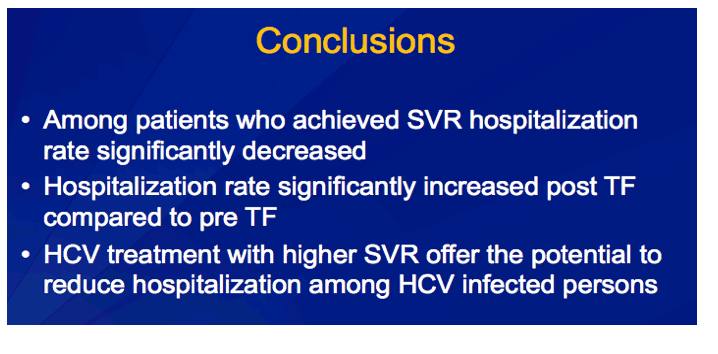
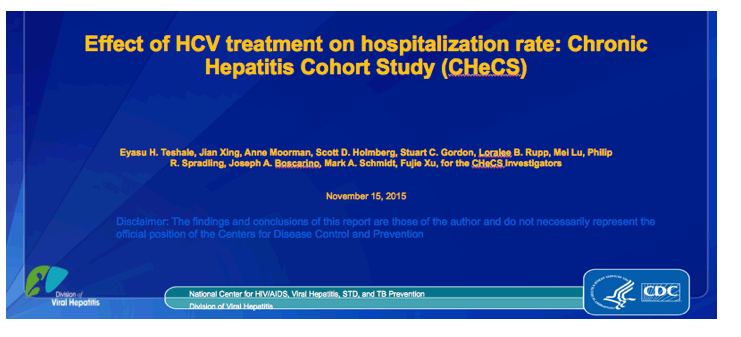
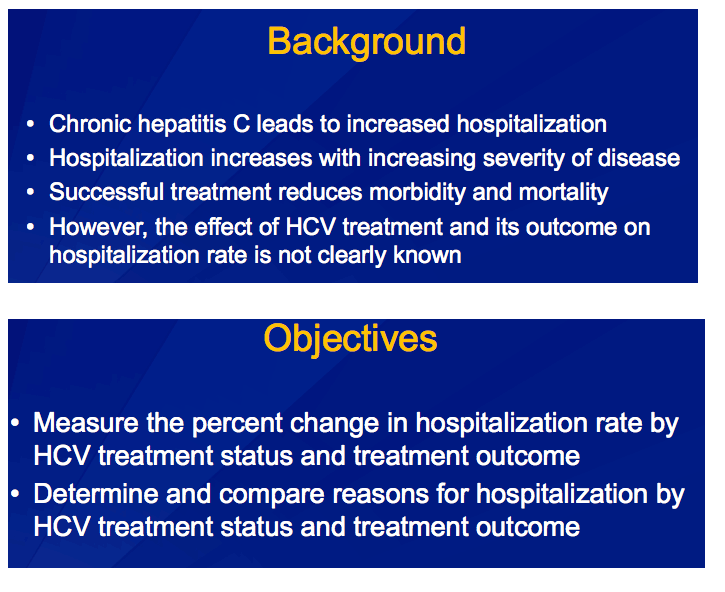

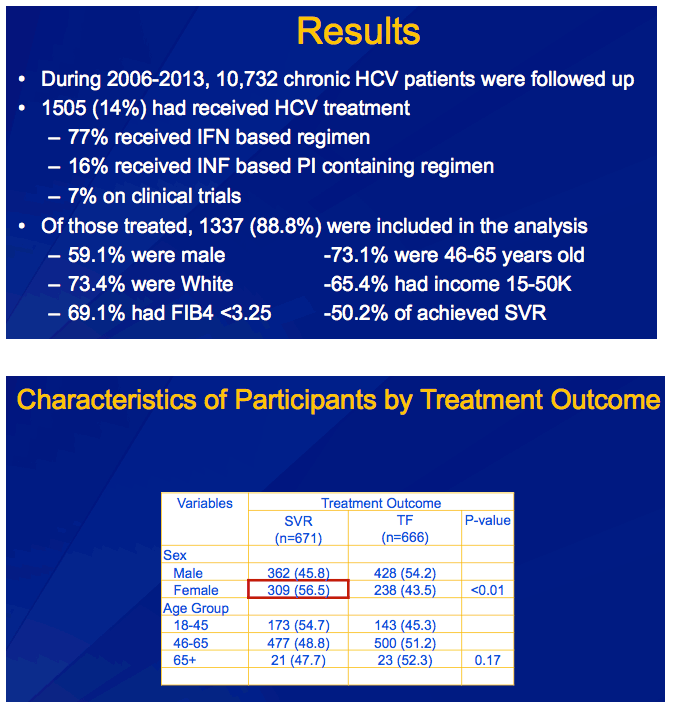
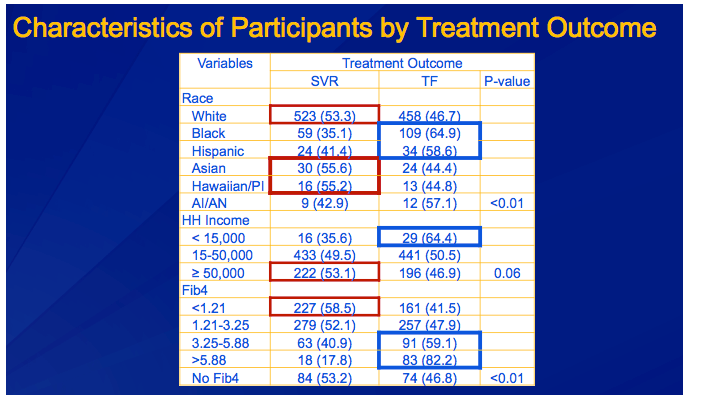
There was no difference in treatment outcome by study site and age group. However, as shown in the red boxes, females,, Whites and persons with income higher than 50 k were more likely to achieve SVR. Sixty five percent of Blacks and 65% of persons with HH income of <15K experience treatment failure. 82% of patients with FIB 4 >5.88 had treatment failure.
As shown in the blue solid boxes Sixty five percent of Blacks, 59% of Hispanics and 65% of persons with HH income of <15K experience treatment failure. Persons with 82% of patients with FIB 4 >5.88 had treatment failure.

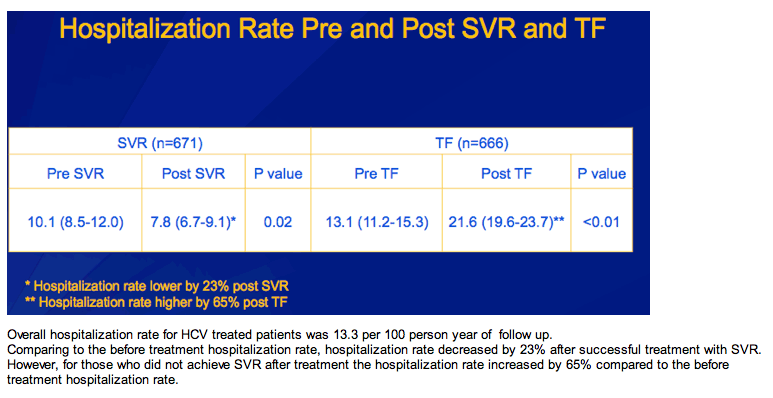
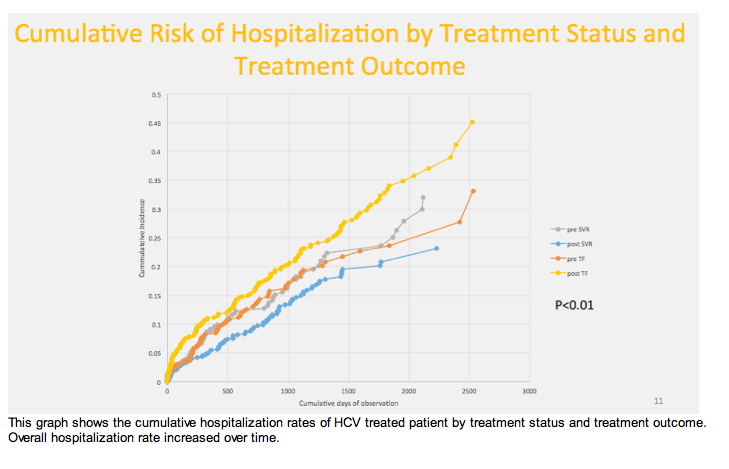
The following four graphs compare the cumulative hospitalization rates by treatment status and treatment outcome. Green represents before treatment for those who achieve SVR (referred as pre SVR), Red represents before treatment for those who didn't achieve SVR also referred as pre TF, Blue and Yellow represent post SVR and post TF respectively.
AS shown in the green (Before SVR) and red (before treatment failure) there was no difference by before treatment hospitalization rates between those who did or didn't achieve SVR.
However, hospitalization rates significantly differed for the three comparison groups with hospitalization rate decreasing after SVR and hospitalization rate increasing after treatment failure. Hospitalization rate was also higher during post TF compared to post SVR observation time. All reaching statistical significance.
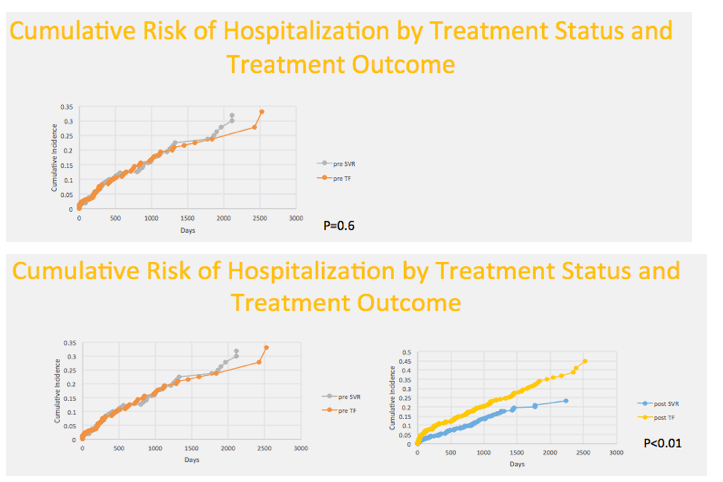
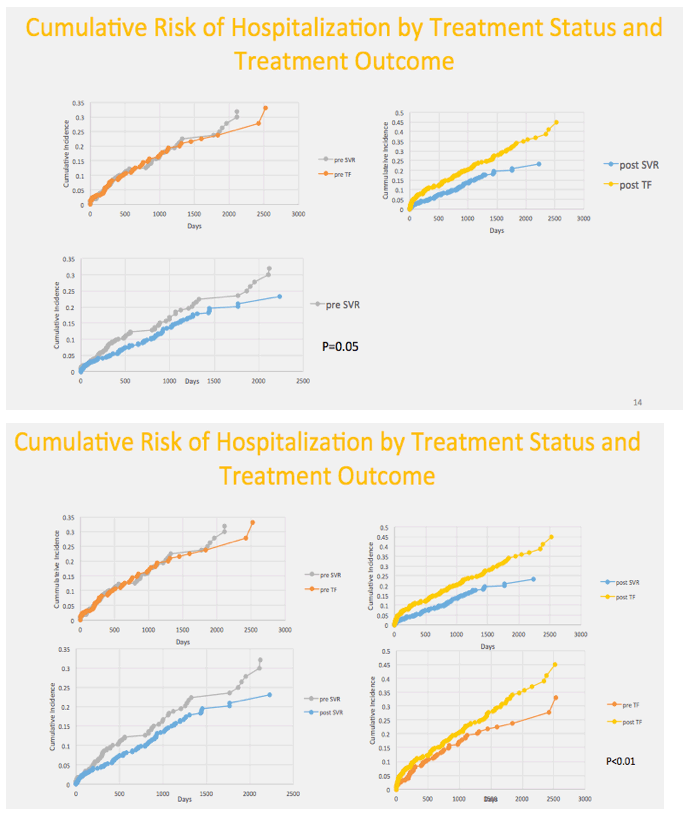
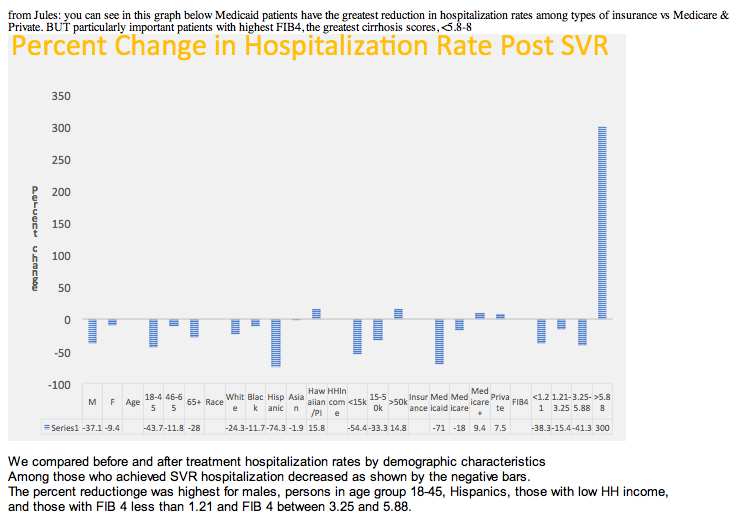
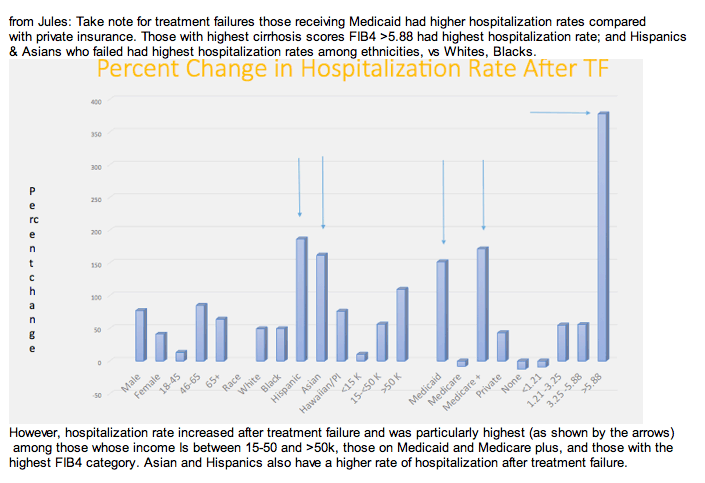

|
| |
|
 |
 |
|
|